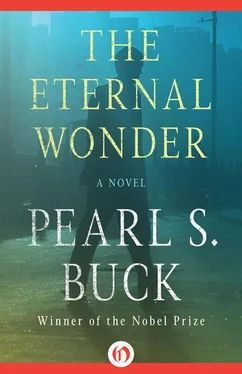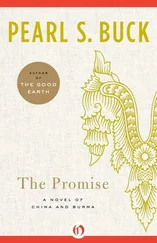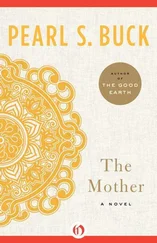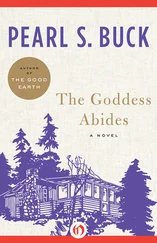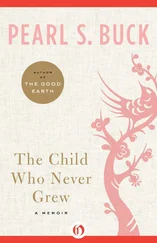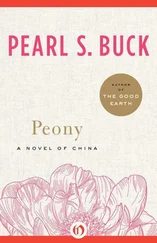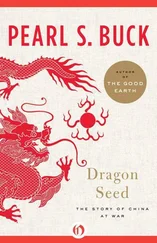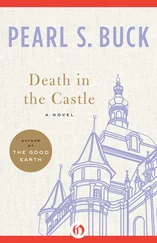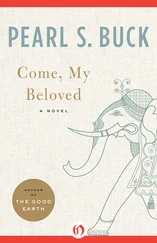He turned to the waiting servant and spoke a few words in Chinese and then again to Rann.
“This man will take you to a guestroom and bring you anything you need. In an hour he will come back for you and lead you to the dining room.”
“Thank you, sir,” Rann said, and knew that he was indeed entering another world.
TIME HAD PASSED, DAYS MOVED INTO WEEKS, and now months. Even as he had stayed timelessly in the castle in England, he now stayed in this old French château on the borders of Paris. Wherever he found life he stayed in this timeless fashion and felt himself welcome. As long as he felt himself welcome he would stay, and yet even this was not conscious and perhaps not even true. As long as he was learning, as long as he was satisfying his insatiable wonder about the world, people, everything, there he stayed.
They were sitting in Mr. Kung’s library, where usually they spent the evenings. The windows were open to the soft evening air. The city was almost quiet in the distance, its many voices no more than a murmur afar off. It was late autumn but the weather was dry and warm, holding the promise of another mild winter in Europe. The walls were solidly books, except for the windows. Here and there a few small tables held priceless jade statues and vases or lamps, objects with which Mr. Kung could not part unless he found something he liked even better, in which case the rejected article went into his enormous shop on the rue de la Paix—a museum of a place—replaced by the new, more favored object until yet another more favored object appeared. It was an endless sifting process, only the more choice works of art remaining here. Rann had noticed the subtle changes taking place constantly and Stephanie had explained the process to him.
“Mr. Kung,” Rann asked, “how did you become so deeply interested in these works of art?”
“Ah, art is the free man’s dream,” Mr. Kung said, “and a man’s life begins and ends with his work—that is, if he is an artist. Each of these works represents the best in a man’s life to that point, for an artist is forever striving to improve and he leaves a piece of himself behind each time as he grows. If one, in a generation long past his, collects carefully then he can know the artist and follow his development even as if he lived in the same day. The artist can never escape his work, and if he is good it is his stamp on the future.”
“I wish I knew where my work begins,” Rann said. “I think of it constantly. I prepare for it without knowing what it is. Meanwhile I ask questions—I cannot keep myself from the necessity of knowing—everything!”
Stephanie laughed. She was curled in the seat under the open window that overlooked the rock garden. “It’s true—nine-tenths of everything you say is questions.”
She was giving him lessons in Chinese now, claiming that teaching the language would help her to improve her own abilities. It was the most profound and fascinating language he had yet learned, and the most difficult, perhaps because it was the most difficult both to speak and to write. He found himself learning it primarily through the writing, the brushing of characters in their manifold design, and every stroke with design and meaning. Each written word was a work of art unto itself, a picture of its meaning, a signal of its sound, carrying within sight and sound a conveyance of feeling. “House,” for example, was only a building, walls and a roof, which might be used for any purpose. But if people lived in that house, “house” became another word, brushed differently and with different sound and meaning. It became “home.” Therefore each written character was a work of art, carefully brushed with precision, each stroke taken in exact order.
It was in discussing the Chinese language that he was learning this winter evening, after dinner, the conversation had moved so easily to the subject of art again, a subject that always drew Mr. Kung’s concentrated thought and attention, since his life’s work was the accumulation and dispersing of objects of art. It was a lucrative business as well, but somehow he could not think of Mr. Kung in connection with business or money. He had more than once been in the shop and had seen and heard Mr. Kung refuse to sell some favorite piece to a customer willing and waiting to pay its price.
“It is not for sale,” Mr. Kung said with dignity upon such occasions.
“But why—”
“I reserve it without explanation,” Mr. Kung said.
“My father,” Stephanie had explained later when they were alone, “my father will not sell a beautiful object which has caught his soul unless the buyer has the soul for it too.”
Later that evening while they enjoyed the warmth of the fire in the library after dinner, Mr. Kung held in his right hand a round piece of priceless jade, a pure soft green, which he rolled in his palm with his fingers. He seldom sat in his Chinese Windsor chair without such a piece of jade in his right palm, turning it slowly but constantly. Sometimes it was a ball of white jade, or the red one. It depended on the color of the satin robe he wore. Tonight his robe was silver-gray, again, his favorite and most often worn color.
“Why do I hold the jade piece in my hand?” he had repeated when Rann had put the question to him. “There is more than one reason. Jade is cool—always cool to the touch. And turning it is my habit. It relieves any tension I may feel. It brings me calm. Moreover, not least, it keeps my fingers supple. It is a sort of unconscious play. But it is more than that. I hold beauty in my hand. In art there is always something deeper than play. The artist knows this. Perhaps his art is a sort of play, an overflow of the spirit, but it is more—it is a revelation of human nature, varying with its time. That is why it is so necessary to know the age of a beautiful object, in order that we may know the creator and what is revealed, through him, of the times in which he lived—the times and therefore the people. If they loved beauty then they were civilized. Art must serve more than a functional purpose. We can judge the cultural stage of a people by the art of its architecture, the style of its literature as well as its content, the manner of its painting, for painting describes the human mind of its times.”
Mr. Kung spoke slowly, reflectively, thinking as he talked, his mellow, gentle voice distinct in the silent room. His two listeners did not speak. Stephanie’s head was turned to the window as she sat silent; the spotlights on the garden created a dramatic effect on the trees and rocks. Rann followed her gaze but looked at nothing and saw nothing, for he was absorbed in a strange new consciousness, a perception of the meaning of beauty that was deeper than any he had known before. Art—he saw it now in its totality—could be expressed in many ways, concretely through many facets of expression, but also in living—just living. The life in this house was based on love and comprehension of the beauty of art and the art of living.
Suddenly he comprehended art as an incentive in life, a call to labor, and yet at the same time a joy. But was there not contradiction here? He put it to Mr. Kung.
“Sir, is the purpose of art the enjoyment of beauty, or is it to provide a sort of work, even though enjoyable, for the artist?”
Mr. Kung replied immediately as though he had already asked himself the question many times before. “Both—art is both labor and pleasure for the creator. It is a compulsion and it is a release, a joy and a demand. It is both male in its aggression into life, and it is female in its acceptance into life. It is one’s destiny, if he be the creator. It is the appointment of heaven when one has the gift. Art condemns no one. It portrays. What does it portray? The deepest truth, and in doing so attains beauty.”
Читать дальше
